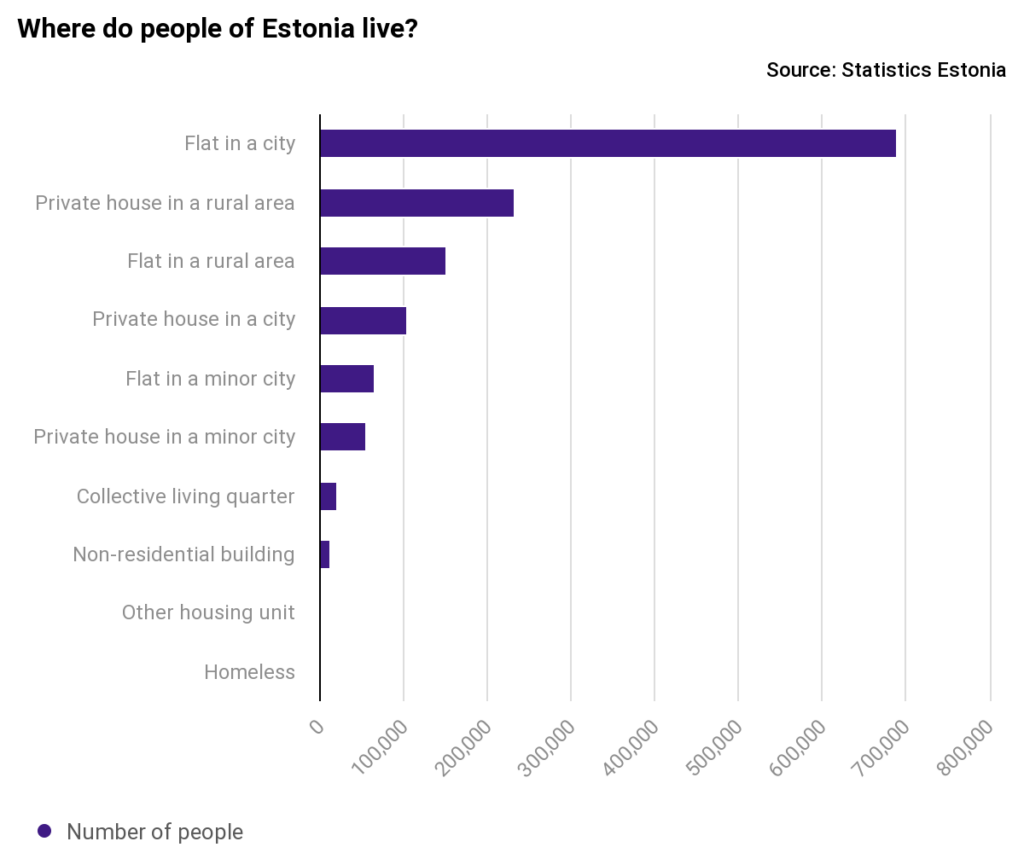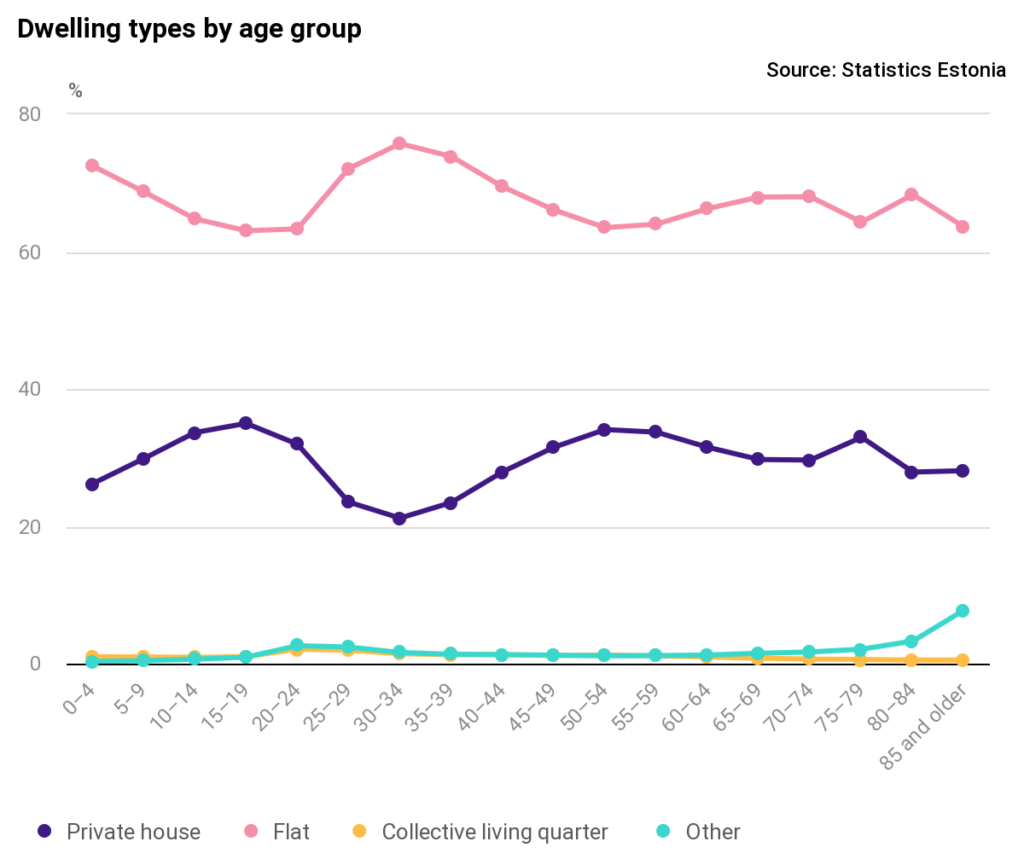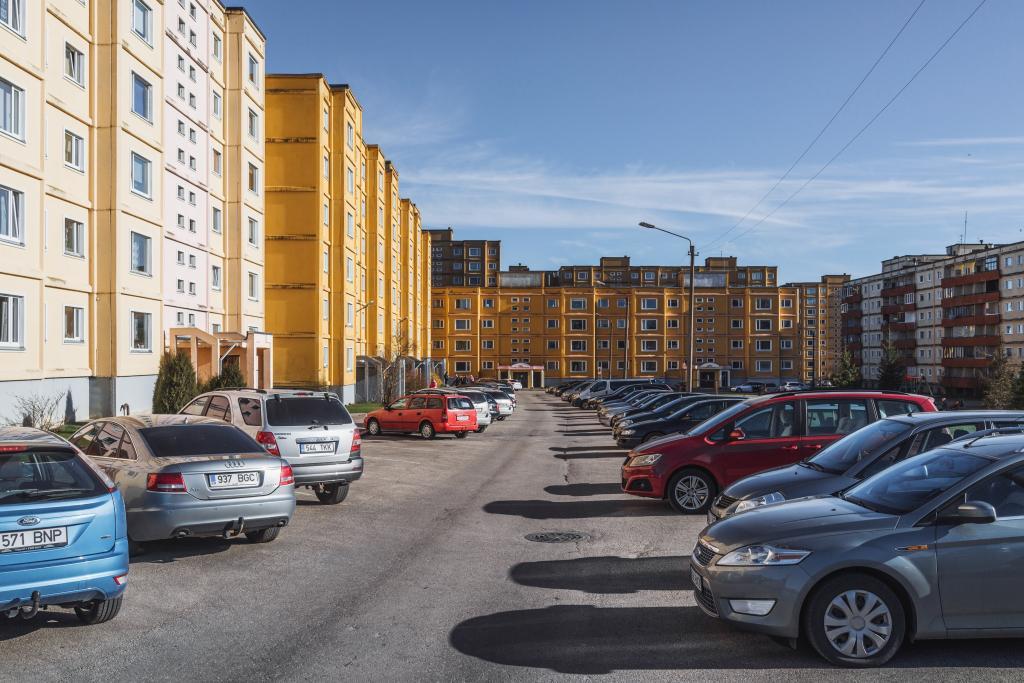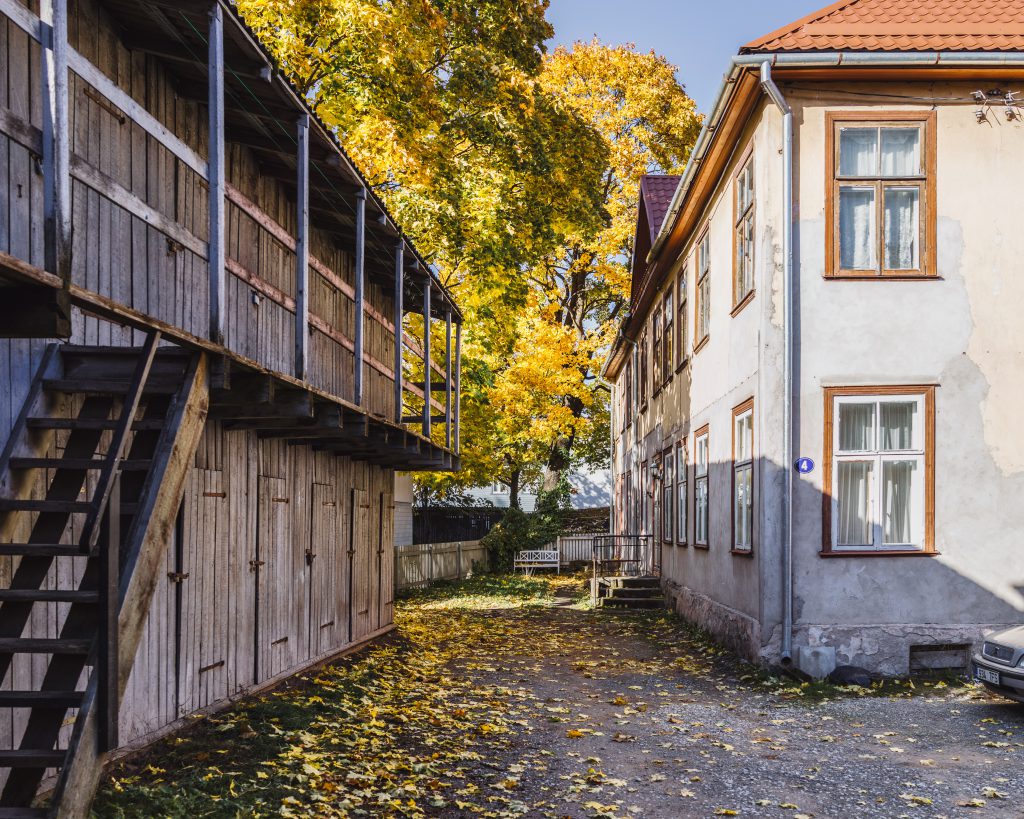Data from the population and housing census conducted at the end of 2021 show that on average in Estonia, people’s homes are older than their owners, and the number of households living in private houses has increased.
Of the more than half a million households in Estonia, 154,422, or 27.5%, live in a private house. These households comprise 390,855 people or 29.3% of Estonia’s total population. Compared with the census of 2011, the share of households living in private houses has increased by 0.7 percentage points.
Apartments, including terraced houses and semi-detached houses, are home to 67.9% of Estonia’s inhabitants. The average household living in a private house has 2.53 members and the average household occupying a flat consists of 2.28 individuals.

More people live in dorms
In addition, 1.6% of the population live in collective living quarters (care homes, dormitories) and 1.2% in other housing units or non-residential buildings. Looking at the data at the level of the individual instead of the household, we see that more than half of Estonia’s population, or 689,204 people in total, live in a flat in a city.
“Dwelling type is strongly correlated with a person’s age and life stages. It is clear that the share of young people living in a private house falls and the proportion of those living in a flat rises sharply after a person reaches adulthood, as young people move to study and live in cities,” Statistics Estonia, the country’s official statistics agency, said in a statement.
There is also a slight increase in the number of people living in other dwellings, probably due to people moving into dormitories.
“After the age of 35, the share of people living in a private house increases for a while and starts to decrease again after the age of 50. At the older end of the age range on the graph, we see a sharp rise in the proportion of collective living quarters, reaching 8%, which is mainly due to the increase in the share of people living in care homes.”

The average building constructed in 1965
71.9% of the population live in a home owned by a member of their household. The share of people renting a dwelling is 18.3%. One-person households are the least likely to own a dwelling, and this is the main reason why rented accommodations are most often occupied by people living alone.
There are 557,146 occupied conventional dwellings in Estonia, located in more than 180,000 buildings. The average building (private house or block of flats) was constructed in 1965, while the average dwelling dates from 1972. For comparison, the average Estonian was born in 1979, so the average inhabitant’s home is older than he or she is. The majority of people in Estonia still reside in Soviet-era buildings.

According to the 2021 census, 94% of the population have access to water supply system, 93% to bathing facilities and 92% to toilet facilities. 71% of the population reside in a dwelling with central heating. 99% of people living in blocks of flats have piped water and toilet facilities, and 97% have bathing facilities.
In absolute terms, there are almost 27,000 households in Estonia without bathing facilities; around 5,000 of these are households with minor children. 49,000 households have to make do without toilet facilities in their home, 9,000 of them households with minors.

